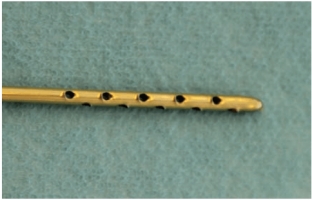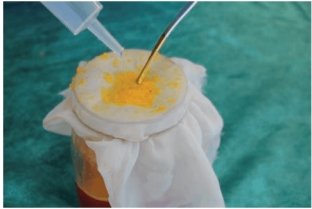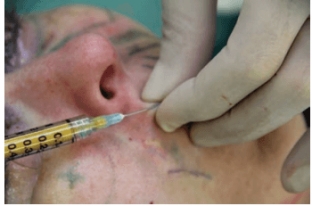The lipofilling procedure to slow down the aging of the facial skin has many features, which consist in the correct choice of injection zones, patient preparation, scrupulous observance of the technique of fat sampling and its introduction.
 Read on estet-portal.com one of the articles by Belgian plastic surgeon Alex Verpaele, director of the Coupure Center for Plastic Surgery (Ghent), about the details of SNIF rejuvenation technology and the nuances of the procedure.
Read on estet-portal.com one of the articles by Belgian plastic surgeon Alex Verpaele, director of the Coupure Center for Plastic Surgery (Ghent), about the details of SNIF rejuvenation technology and the nuances of the procedure.
Signs of facial skin aging and methods of their correction
The main intrinsic factor in facial skin aging is a decrease in its thickness, which leads to a decrease in the amount of collagen, elastin and hyaluronic acid. Sun exposure is a significant external factor, although smoking and pollution also play a significant role. Mechanical elements, including gravity and repetitive facial movements, also contribute to the formation of wrinkles.
Sagging of the face, damage to the surface of the skin, deflation of the volume of the face are factors that indicate the need for treatment. Modern approaches to facial rejuvenation require the doctor to pay attention to all aspects. Sagging is treated with tightening techniques. Volume deflation can be treated with classical lipofilling techniques. Damaged skin is treated with resurfacing techniques (laser exposure, peeling, dermabrasion and / or the introduction of intradermal fillers). These injections can be performed alone or in combination with facial rejuvenation surgery.
What methods are effective for combating facial skin aging
Dermal filler has become an extremely popular technique that helps to prevent facial skin aging in a minimally invasive manner and is very popular among relatively young patients (30-40 years old). Classical dermal fillers are divided into permanent and absorbable. Permanent fillers have a higher complication rate than absorbable fillers. At the same time, the temporary nature of absorbable fillers is their obvious disadvantage.
The search for the perfect intradermal filler continues. Based on our experience in lipofilling fine-grained fat grafting and published reports on the use of dermal fillers, we started injecting SNIF fine-grained intradermal fat grafting using a sharp needle and have already used this technique on 250 patients. This article describes our three years of experience with this alternative skin filling technique.
Working methods for SNIF lipofilling technology
We retrospectively reviewed the records of 250 patients who received SNIF treatment over a three year period. Patient demographics were collected along with information on associated procedures and complications.
SNIF procedure: fat collection for lipofilling
Intradermal fat grafting can be performed in combination with other facial rejuvenation procedures using local or general anesthesia. Fat is collected during facial infiltration, using an adrenaline-containing local anesthetic. The best donor area for fat collection is below the navel due to direct access if the patient is lying on their back. In this area, preoperative marking is carried out in a standing position. Other donor sites include fat deposits on the sides and inner thighs or knees.
After preparing the skin and marking it, a modified Klein solution containing 800 mg of lidocaine and adrenaline (1/1,000,000) was infiltrated as in conventional liposuction. We used a "wet" technique for infiltration (2:1).
A 2 mm incision was made along the skin tension lines with a #11 scalpel. Sectional lipectomy was performed manually using sterile syringes or sectional instruments with a sterile container. If the required volume of fat was less than 10 ml, then the fat was collected by cannula with a Luer-Lok syringe. Fat volumes greater than 10 ml were collected with a sectional instrument with a sterile container. The sectional cannula should be 2-3 mm in diameter with many pointed holes on its upper segment (Figure 1, Tulip Medical Products, San Diego, CA). The well-defined diameter of the cannula openings is important for the introduction of small particles through a 23 G needle.
Thus, the SNIF technique is very different from classical lipofilling procedures. The sharp edges of the holes increase the amount of fat collected because the cannula works like a grater in the donor area. A sterile nylon mesh fabric was placed over a sterile container and the surface fat was poured on top (Fig. 2). The fat was rinsed with saline and transferred to a 10 ml syringe. Using a double Luer-Lok adapter, the fat was transferred into a 1 ml syringe. A 23 G needle was placed on a syringe for intradermal injection.
SNIF procedure: injection technique for lipofilling
Before the injection, the skin was marked with a pencil while the patient stood and moved his face intensively, demonstrating facial expressions.
It is very important that the skin is marked before local anesthetic is administered, as the anesthetic solution may mask fine lines. It is very important to inject exactly into the wrinkles that were marked before the operation.
A 23 G sharp needle was used for injection. Injections were made into the superficial skin plane. The skin was pinched in such a way that the wrinkle was between the thumb and forefinger (Fig. 3). Linear fat insertion was performed while the needle was withdrawn.
Immediately after the injection of fat, the skin around the injected wrinkle is cleansed. A slight overcorrection is recommended as it will help to normalize the skin within a few hours after the interstitial fluid has been absorbed. For deep wrinkles and folds, it may be necessary to separate the wrinkle from the ligaments for optimal results. This can be achieved with a 17 G needle, which will be used as a "knife" under the skin. The 17 G needle is used exclusively for dissection and under no circumstances for intradermal injection. Intradermal fat injection can be performed as an additional and final procedure after classical lipofilling of deep folds (eg nasolabial folds) using small blunt cannulas.

Fig. 1. Cannula for collecting fat multi-port sharp diameter 2 mm, with 1 mm holes (Tulip Medical Products, SanDiego, CA). Note the sharp edges of the holes that make the cannula a sort of grater, increasing the amount of fat collected

Fig. 2. Sterile container with mesh cloth (mesh openings 0.5 mm in diameter) is used to wash the fat with sterile normal saline. After that, the fat is placed & nbsp; into sterile syringes

Fig. 3. The skin is fixed in such a way that the wrinkle is between the thumb and forefinger. Linear injection of fat is carried out into the superficial plane of the skin while pulling the needle
Thus, SNIF is an effective and safe alternative to resorbable dermal fillers for patients who are prepared for the minor discomfort caused by fat harvesting from the donor area. Collection and injection techniques must be carefully followed in order to achieve good results and prevent complications.Detailed description of SNIF technique of fat injection with a needle will be presented at the ISAPS World Congress, which will be held in Kyiv on May 19-20,
ALEX VERPAELE, BELGIUM
- Developer of the revolutionary MACS lift
- Member of the International Association of Aesthetic Plastic Surgeons ISAPS
- Member of the American Association of Aesthetic Plastic Surgeons ASAPS
- Member of the Royal Belgian Society for Surgery
- Member of the Belgian and Dutch Association of Plastic Surgeons
- Founder of Aesthetic Medical Center 2 «(E: MC²), Sint Maartens-Latem
- Director of the Coupure Center for Plastic Surgery, Ghent







Add a comment